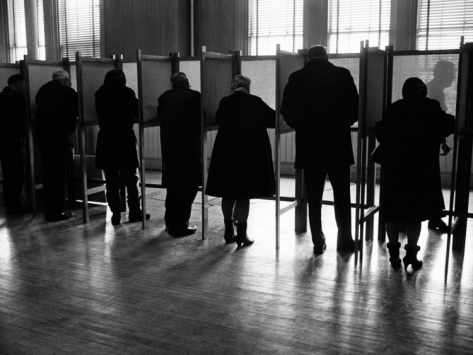For me Twitter is a place to put links to articles I’ve read that I love, to try to encourage others to also read them, so I pretty much ignore my feed. However, every now and then I’ll have a look and am sometimes happily surprised. An example:
The great breakthrough in AI will come not when computers finally learn to think but when humans finally forget
— walter kirn (@walterkirn) May 9, 2016
I don’t know if I agree with Kirn on this argument–I’m pretty sure both requirements will need to be met before superintelligence will emerge–but it was great spending time thinking about the big idea he embedded in a few characters.
On the topic of recommending writing I love, Kirn has penned “The Improbability Party,” a beauty of a Harper’s essay about our algorithmic age running up against a tumultuous political season. Our new tools were supposed to measure the world better but haven’t, at least not so far during this mishegoss election. The writer sees gambling parlors and newsrooms as analogous, visiting a gaming professional in Las Vegas who explains that he “sells suspense.” You know, like CNN or pretty much anyone in the election-year horserace business.
Two comments:
1) One caveat to Kirn’s theory is that primary seasons have low turnout and fewer polls, making prognostication far tougher. If Nate Silver and company get the general wrong, that would be surer proof of the article’s assertions. Of course, if that happens, we’re talking about a Trump Administration, and many may be too busy speeding north on the 281 to Canada to curse FiveThirtyEight.
2) Kirn also sees the fringe-gone-mainstream campaigns of Trump and Sanders as two very separate wings of a new party of sorts, one that can’t be pinned down, which gives him the title of his piece. You could also wonder if moderate Republicans and Dems will synthesize into a nouveau voting bloc if the two traditional groups swing even further to the Right and Left in 2020.
The opening:
I like to think I’m unique. Don’t you? Complicated. Surprising. Unpredictable. I like to think that people who’ve only just met me or who know only the basic facts about me still have a lot to learn. I also like to think that people who’ve known me for a long time — family members, say — still don’t know the essential, the true me. What I really like to think, however, is that corporate statisticians, who track my consumer choices and feed them into algorithms to forecast my behavior for Google or Amazon, are capable, on occasion, of getting me wrong. No, just because I bought Tender Is the Night doesn’t mean I’ll like A Moveable Feast; the Fitzgerald book is fiction, see, and the Hemingway book that mentions Fitzgerald and happens also to be set in Paris is memoir. And I’m not a fan of memoir.
The slightly demeaning guesses are inescapable. I recently spoke to a young woman who accidentally left a streaming-video service running on her television while she went out. Show after show played with no one in the room. When the woman returned, the service’s suggestion engine had cued up a slate of grim reality programs about unwed teenage mothers. Such shows aren’t to her taste, she told me, and so the recommendations confused her. Then she solved the puzzle. If you averaged the subjects of all the programs she had supposedly watched, the result would be unwed teenage mothers.
This is similar to what Nate Silver does with polls, if I understand the super-pollster’s methods. On his vaunted website, FiveThirtyEight, Silver lumps together lots of polls and takes a weighted average to yield a single result. He then makes subtle adjustments to this result using a proprietary formula that I’ve seen referred to as his “secret sauce.” (Being more a language guy than a numbers guy — on the team that’s rarely favored to win — I can’t let it pass unremarked that “secret sauce” feels like a high-end rebranding of “bullshit.”) The word on the street is that if you bet with Silver, especially if you’re betting on elections, which were once thought to be incredibly complex events but turn out to be more like ball games without the balls, you can’t go wrong.
Except you can!•




